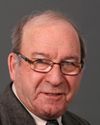You mention the statistics, the 44 to 184 students. If you have 200 students and you get 44 grads, that's great, but you have to remember that the population in those high schools is growing significantly.
So when I talk to my chiefs and council, I say, “It's a great thing. We've got 184. Things are looking up.” But we have to remember the volume that's there.
Off the top of my head, approximately 87% of our students are below grade 10. There's a great volume of students, and it's growing. So although that number looks very promising, there's lots of work to go forward with, in my opinion.
On school boards and input into programs, yes, all of our communities in the grand council have school boards. We have moms and dads from the community with kids in the school, and some of them are pretty active and some are not so. In terms of programs, a very strong element is to talk about culture, to talk about language, to have programs in the elementary schools to the high schools to deal with that. Lots of our communities have camps where students go out and understand those experiences, not necessarily to turn them into trappers and fishermen, because it's tough to make a career there, but just to have a good understanding of who they are, where they are. In the grand council, that's very important for us.
You talked about the guidance and counselling that takes place. In some of our schools it's tough because, as I said before, you might not have money in your budget to have a counsellor. You try to do the best you can because you know it's something that's needed. One of our projects is to bring all of our counsellors together to talk about careers and education with students, to try to be able to address some of the issues they're going through in their lives, because a guidance counsellor is a very big important part of a high school, of a junior high school. And you need people who had time to be trained to be able to work with those issues, because I believe they are very special.
On the recommendations about how to address issues, tomorrow, after it's translated, you'll have those to look at.
You made reference to improving education and structure. One of the things we've stated in our documents is to improve and equip some of our schools in the communities to address education better at K to 12, at post-secondary. A lot of times when we look at adult education, what we find from our indicators, our programs, is that the adults like to come to the high school instead of going to a different building, because the high school is able to have a biology lab, a chemistry lab, and some of those storefronts don't have those types of things.
When you talk about structure, I made mention a little while ago that you might not be able to have a chemistry teacher. Well, we've developed a distance computer classroom that goes to the community. So if I have two students in Black Lake and one student in Cumberland House, I might be able to get those five or ten students with that chemistry they need to go on because they want to be a nurse. Without that, it's not uncommon for us to say, “Sorry, you can't take Math C30, we don't have a teacher.” I have come across that, where we say, “We can't offer it to you.” So when you talk about structure, those are the types of things we're looking at in K to 12 right now.






